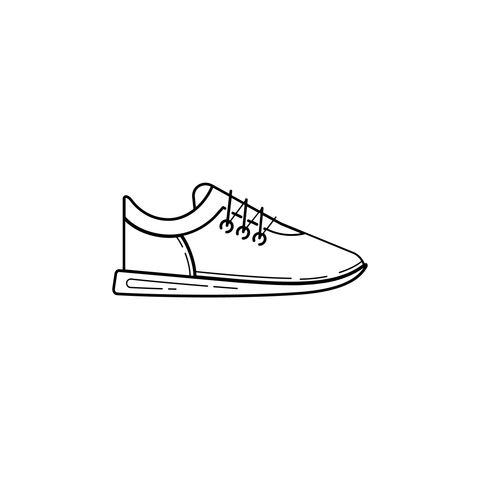THREE TRAINING TIPS FROM A HUNTER SOLDIER.
Carsten Møller has been a hunter soldier since 1987 and was previously responsible for the physical training in the corps as well as chairman of the Hunter Corps Sports Association for a decade.

Carsten has been a dedicated runner for more than 40 years. In combination with his experience from the special forces, this has given him in-depth knowledge of how to best build the body so that it can handle a high level of stress over a long period of time - without getting injured. Here he shares some of his thoughts and personal experiences with training through a long, active life in a challenging and demanding environment.
TIP #1: THE BODY IS A GOSSIP HANDLE.
"I've never been a fan of excessively fixed training programs because, after many years of physical training of various kinds - 3-4 times a week - I've gotten to know my body and therefore better understand its signals. It should be noted that after a few years of regular physical training I almost became addicted and therefore for many years trained most days of the week.
I almost always have a plan with my training, but if my body tells me at the start of a planned training session that it is not the right day, that it is not suitable for a 1000 m interval, then I simply change the plan and run instead a longer trip at a more moderate pace.
It is my experience that the signals your body sends correspond very well with what you can also see on a heart rate monitor and a training watch - which I have personally only rarely used."
Listen to your body's signals and adapt your training sessions if necessary. It helps to minimize the risk of overload and injuries.
TIP #2: SIMPLE AND VARIED TRAINING.
Although my heart has probably always burned most for running training, perhaps one of my most significant experiences is that it is a varied training that gives the best results. Regardless of whether it applies to long-distance, interval or hill running as a variation across sports such as orienteering, cycling, strength training, swimming and marching with a heavy rucksack. It has also meant that I have very rarely been challenged in terms of training fatigue or injuries.
And now that I can no longer run away from the fact that age has an influence on my performance after all, I can once again state that alternating between different types of running and physical training means that I am still motivated to train most days of the week. In addition, it minimizes the pain from a relatively long life with what someone has characterized as 'mistreatment of my body' - but which I still enjoy, even when the limits have to be tested once in a while.
So regardless of what your favorite sport or form of training may be, you should combine it with other forms of training that stress the body in a different way. Thereby you build a versatile, strong body and minimize the risk of injuries.
TIP #3: WHAT WORKS WELL FOR ME DOESN'T NECESSARILY WORK FOR EVERYONE.
"Starting from your own situation is, based on my experience, crucial for the result and the effect. It is difficult to find two people whose situation is completely the same - not least because of genetics, but also because factors such as work, private life, place of residence, training age, etc. which will usually always be different.
It is my experience that you should never be afraid to try something new - or something that others have been successful with. Because it is when you try something new that you find out whether what you are already doing is precisely what gives the best result - or whether you actually get a little faster on, for example, a 5,000 m road race if you put in a weekly hill training pass or a longer MTB ride into the training program every other weekend.
One thing is certain: if you do what you've always done, things tend to stay the way they've always been (which, admittedly, can also turn out to be the best thing in between).”

'A day without training is a day without meaning - and a little is better than nothing'.
Really enjoy your physical training.


